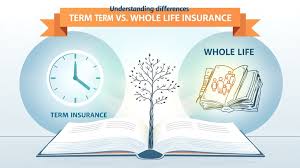One of the most important financial instruments for safeguarding your family’s future is life insurance. In the event of your untimely death, it offers a financial safety net to make sure your loved ones are taken care of. Despite its significance, a lot of people put off getting life insurance because they are unaware of it or have misunderstandings about it.
Everything you need to know about life insurance will be covered in this extensive guide, including its types, advantages, operation, and how to select the best policy for your requirements.
Life Insurance: What Is It?
An individual (the policyholder) and an insurance company enter into a contract for life insurance. The insurer agrees to pay a lump sum (death benefit) to the policyholder’s beneficiaries upon their passing in return for consistent premium payments.
Important Elements of Life Insurance:
The owner of the policy is known as the policyholder.
The individual whose life is covered—typically the policyholder—is known as the insured.
The individual or people who receive the death benefit are known as beneficiaries.
Premium: The sum paid on a monthly, quarterly, or annual basis to maintain the policy’s validity.
Death Benefit: The amount paid out to beneficiaries upon the death of the insured.
. Final Expense Insurance
- Definition: A small whole life policy designed to cover funeral and burial costs.
- Pros:
- Easy to qualify for (minimal medical underwriting).
- Affordable for seniors.
- Cons:
- Low death benefit (typically $5,000–$25,000).
Best for: Elderly individuals who want to avoid burdening family with funeral costs.
Why Do You Need Life Insurance?
1. Financial Security for Dependents
If you have a spouse, children, or aging parents who rely on your income, life insurance ensures they are financially protected.
2. Covering Debts and Liabilities
Outstanding debts (mortgages, car loans, credit cards) won’t disappear after death. Life insurance can prevent your family from inheriting financial burdens.
3. Estate Planning
Life insurance can help cover estate taxes, ensuring smooth wealth transfer to heirs.
4. Business Protection
Business owners can use life insurance to fund buy-sell agreements or protect against the loss of a key employee.
5. Peace of Mind
Knowing your loved ones won’t face financial hardship provides emotional security.
How Much Life Insurance Do You Need?
A common rule of thumb is 10–15 times your annual income, but consider:
- Outstanding debts (mortgage, loans).
- Future expenses (children’s education, spouse’s retirement).
- Final expenses (funeral costs, medical bills).
Use the DIME formula for a more precise estimate:
- Debt (total liabilities)
- Income replacement (years of income needed)
- Mortgage (remaining balance)
- Education (children’s future costs)
How to Choose the Right Life Insurance Policy
1. Assess Your Needs
- Do you need temporary or lifelong coverage?
- Do you want an investment component?
2. Compare Quotes
Get multiple quotes from different insurers to find the best rates.
3. Check the Insurer’s Financial Strength
Look for ratings from agencies like A.M. Best, Moody’s, or Standard & Poor’s.
4. Understand Policy Riders
Common riders include:
- Accidental Death Benefit (extra payout for accidental death).
- Waiver of Premium (waives premiums if disabled).
- Critical Illness Rider (pays out if diagnosed with a severe illness).
5. Review the Fine Print
Exclusions (e.g., suicide clause, high-risk activities) can affect payouts.
Common Myths About Life Insurance
Myth 1: “I’m Young and Healthy—I Don’t Need Life Insurance.”
- Reality: Premiums are lowest when you’re young. Waiting can lead to higher costs or denial due to health issues.
Myth 2: “Life Insurance Is Too Expensive.”
- Reality: Term life insurance can cost as little as $20–$30 per month.
Myth 3: “Employer-Provided Life Insurance Is Enough.”
- Reality: Employer policies are often limited (1–2x salary) and end if you leave the job.
Myth 4: “Stay-at-Home Parents Don’t Need Life Insurance.”
- Reality: Their contributions (childcare, household duties) have financial value.
Conclusion
Life insurance is not just a financial product—it’s a promise to protect your loved ones when you’re no longer there. Whether you choose term life for affordability or whole life for lifelong security, the right policy ensures your family’s future remains stable.
Take action today: Assess your needs, compare policies, and consult a financial advisor to make an informed decision. Your family’s financial security is worth it.

